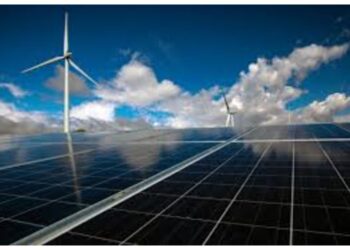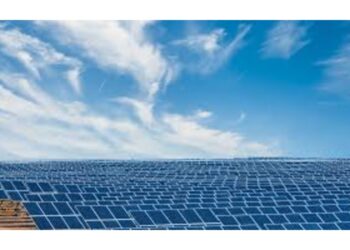As the world embraces clean and renewable energy sources, solar-powered technologies are stepping into the spotlight like never before. Among these, solar pumps are making a quiet but transformative impact—especially in regions where grid electricity is unreliable or non-existent. These energy-efficient devices are revolutionizing water access for agriculture, rural communities, and industries, helping reduce carbon emissions while empowering livelihoods.
The global solar pumps market is experiencing dynamic growth, driven by the twin imperatives of energy sustainability and agricultural productivity. With rising awareness, supportive government policies, and technological innovation, solar pumping systems are no longer niche—they’re becoming a necessity.
What Are Solar Pumps and Why Are They Important?
Solar pumps are electric water pumping systems powered by solar photovoltaic panels. They are primarily used for irrigation, livestock watering, community water supply, and sometimes for wastewater management. Instead of relying on diesel or electricity, solar pumps use the sun’s energy—making them cost-effective, environmentally friendly, and ideal for remote and off-grid locations.
These systems play a pivotal role in enhancing agricultural output in rural areas by providing consistent and affordable access to water, even in drought-prone regions. Additionally, they eliminate dependence on expensive and polluting fossil fuels.
Market Outlook: A Decade of Accelerated Growth
The solar pumps market was valued at US$ 1.2 billion in 2021. It is estimated to advance at a CAGR of 11.1% from 2022 to 2031. The market is expected to reach US$ 3.38 billion by the end of 2031.
This impressive growth trajectory is fueled by global efforts to cut greenhouse gas emissions, the rising cost of fossil fuels, and increased demand for decentralized clean energy solutions. Developing countries, in particular, are investing heavily in solar irrigation as a long-term strategy to address food security and water scarcity challenges.
Key Market Drivers
1. Agricultural Transformation in Developing Economies
In regions such as Sub-Saharan Africa, South Asia, and parts of Latin America, agriculture is the backbone of the economy. However, unreliable electricity and the high cost of diesel have long hindered irrigation. Solar pumps provide an effective solution—enabling smallholder farmers to irrigate more land and improve crop yields while minimizing operational costs.
2. Government Subsidies and Incentive Programs
From India’s KUSUM scheme to Africa’s solar irrigation pilot projects, governments worldwide are offering generous incentives to boost solar pump adoption. Subsidized loans, upfront capital support, and tax incentives are lowering entry barriers and making solar-powered systems more affordable for farmers and communities.
3. Rising Fuel and Electricity Costs
The volatility of diesel and electricity prices has made solar pumps increasingly attractive. Although initial costs can be high, solar systems offer long-term savings and low maintenance, making them economically viable in the medium to long run.
4. Global Shift Toward Renewable Energy
As countries race to meet their climate goals and transition toward green economies, solar pumps are gaining recognition as a critical part of the renewable energy puzzle. Their role in rural electrification and sustainable water management is aligned with multiple United Nations Sustainable Development Goals (SDGs).
Trends Shaping the Future of the Solar Pump Market
• Technological Advancements in PV Panels and Controllers
Ongoing R&D is improving the efficiency and affordability of solar panels, batteries, and pump controllers. New models feature smart sensors, remote monitoring capabilities, and automatic shutoff functions, making them more adaptable to variable sunlight and water demand.
• Integration with IoT and Remote Monitoring
Modern solar pumps now feature remote control and data analytics options that allow users to monitor performance, detect malfunctions, and even control irrigation schedules via mobile apps—making these systems smarter and more user-friendly.
• Emergence of Solar Hybrid Systems
In areas with intermittent sunlight or higher water demand, hybrid systems that combine solar with grid or diesel power are gaining popularity. These systems ensure water availability while still lowering fossil fuel usage and operational costs.
• Pay-As-You-Go (PAYG) Financing Models
To increase accessibility, companies are introducing innovative financing models such as PAYG, where farmers can pay for solar pumps in small installments based on usage. This approach is gaining traction in Africa and Southeast Asia, enabling adoption even in low-income regions.
Challenges Facing the Market
Despite its potential, the solar pump market faces some notable obstacles:
- High Initial Cost: While long-term savings are significant, the upfront investment for a solar pump system can still be prohibitive for many small farmers or rural households without access to financing or subsidies.
- Lack of Awareness and Technical Training: Many users, especially in remote regions, lack awareness about solar pump benefits or the technical know-how for installation and maintenance. This can lead to underuse or premature system failure.
- Supply Chain Limitations: In some countries, the availability of high-quality components or trained technicians remains limited. This can delay deployment or result in lower system reliability.
- Storage and Seasonal Dependency: Without energy storage, solar pumps depend heavily on sunlight, which can be inconsistent. This limits their use during cloudy seasons or in high-demand nighttime irrigation.
Competitive Landscape: Leading the Charge
Prominent solar pump manufacturers are investing significantly in R&D activities to launch more efficient, durable, and smart products. Many are also embracing mergers and acquisitions to enhance their market share and expand geographically.
Key players in the market include: Bernt Lorentz GmbH, Bright Solar Ltd., C.R.I. Pumps Private Limited, Dankoff Solar, Franklin Electric, Grundfos, K.S.B. Ltd., PM Pumpmakers GmbH, Schneider Electric SE, and Tata Power Solar Systems Ltd.
These companies are at the forefront of innovation—developing solar pump solutions that are easier to install, require less maintenance, and deliver more reliable water flow. For example, Tata Power Solar Systems is actively contributing to India’s massive solar irrigation efforts, while Franklin Electric is expanding its presence in Africa and Latin America through modular product designs and strategic partnerships.
Regional Insights: Where Growth is Concentrated
Asia Pacific: The Largest and Fastest-Growing Market
Countries like India, China, Bangladesh, and Indonesia are witnessing exponential growth in solar pump installations due to their large agrarian populations, favorable climate, and strong government backing. India alone has distributed hundreds of thousands of solar pumps under various government schemes.
Africa: A Rising Frontier
Africa has vast potential for solar pumps, particularly in off-grid farming regions. Several international agencies and NGOs are funding pilot projects and large-scale installations, aiming to improve food security and climate resilience across the continent.
Middle East and Latin America: Emerging Opportunities
Water scarcity is a pressing issue in both regions. Solar pumps offer an ideal solution to power wells and irrigation systems in arid climates without adding to carbon emissions. Brazil, Mexico, and countries in the Gulf Cooperation Council (GCC) are starting to adopt solar pumps at a faster pace.
Why This Market Report Matters
The solar pumps market report provides valuable insights for policymakers, manufacturers, investors, and NGOs. It captures not just where the market is headed but also how solar pump technology is transforming lives, empowering agriculture, and enabling sustainable development in some of the world’s most vulnerable regions.
Understanding key drivers, challenges, and emerging technologies helps stakeholders make informed decisions—whether it’s planning an investment, launching a new product, or rolling out a subsidy program.
Final Thoughts: A Bright Future for Water and Energy
Solar pumps may not always be visible in the headlines, but they are quietly powering a global transformation—bringing water, hope, and energy independence to millions. In a world facing energy volatility, climate change, and resource scarcity, they offer a practical, scalable, and sustainable solution.
As the market continues to grow and innovate, the humble solar pump will play an increasingly powerful role in reshaping how we access and manage water—one sun-powered drop at a time.













